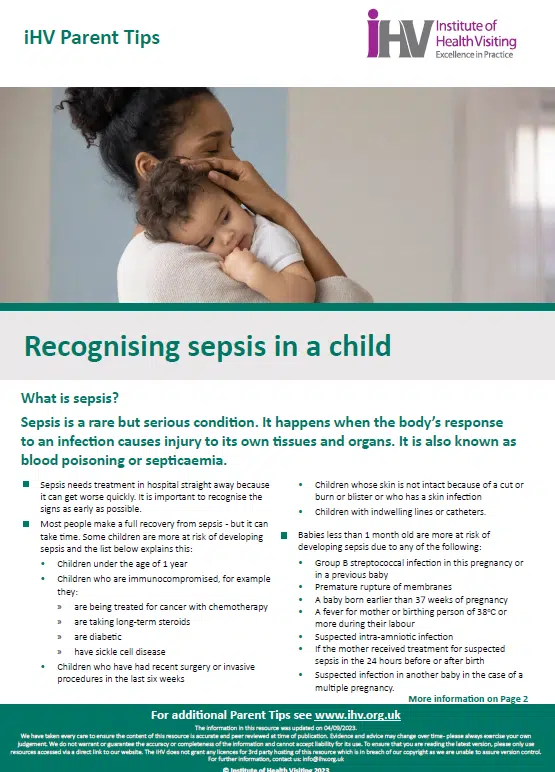Ahead of World Sepsis Day on 13 September, we are delighted to share this updated Parent Tip and Good Practice Point, focusing on recognising sepsis in children.
Sepsis is a rare but serious condition. It happens when the body’s response to an infection causes injury to its own tissues and organs. It is also known as blood poisoning or septicaemia.
Sepsis needs treatment in hospital straight away because it can get worse quickly. It is important to recognise the signs as early as possible.
“Supporting parents to spot the signs of sepsis is a vital part of health education for families and there is no one better placed to offer this than health visitors. This education is so important not only because we do not want to miss sepsis, but also because it is so important to help parents decide which signs they should really worry about when seeking the right health service for their child when they are unwell,” says David James, Consultant in Paediatric Emergency Medicine at University Hospital Southampton.
This Parent Tip explains what sepsis is and what symptoms parents should look out for.
This Good Practice Point (GPP) aims to equip health visitors in their work supporting parents to recognise the signs of sepsis. It sets out what health visitors need to know about sepsis and is designed to raise awareness of the condition. Sepsis can be potentially life-threatening; parents know their children best and their concerns need to be taken seriously.
Please note that GPPs are available to iHV members.
If you’re not a member, please join us to get access to all of our resources.
The iHV is a self-funding charity – we can only be successful in our mission to strengthen health visiting practice if the health visiting profession and its supporters join us on our journey. We rely on our membership to develop new resources for our members.
So do join us now!





